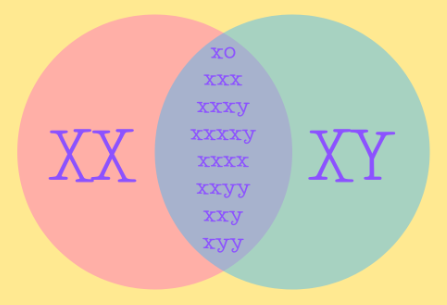Learn about intersex
Intersex 101
Here we give a brief explanation of what the word intersex means as well as a look at other terminology used to describe intersex bodies
Intersex is an umbrella term used to describe a wide variety of natural bodily characteristics that don’t fit neatly into strict medical binary definitions of male and female. Intersex variations can be genital, chromosomal, or gonadal and apparent at birth, puberty or not at all .
. Experts estimate that between 0.05% and 1.7% of the population have some sort of intersex variation.
To put that in perspective, people with red hair make up about 2% of the population as do people with green eyes.
While intersex and transgender are not the same thing, there are intersex people that identify as transgender. Intersex people may identify as male, female or neither, and can be straight, gay, lesbian, bi or asexual.
The word intersex was coined in 1917 by German-born geneticist Richard Goldschmidt, replacing the words hermaphrodite and pseudo-hermaphrodite, taken from the story of Hermaphroditus in Greek mythology. In 2005, the medical establishment introduced DSD, or Disorders of Sexual Development, to replace intersex. Intersex adults and activists say that DSD is unnecessarily pathologising, preferring to retain the word intersex or even in some cases hermaphrodite.
